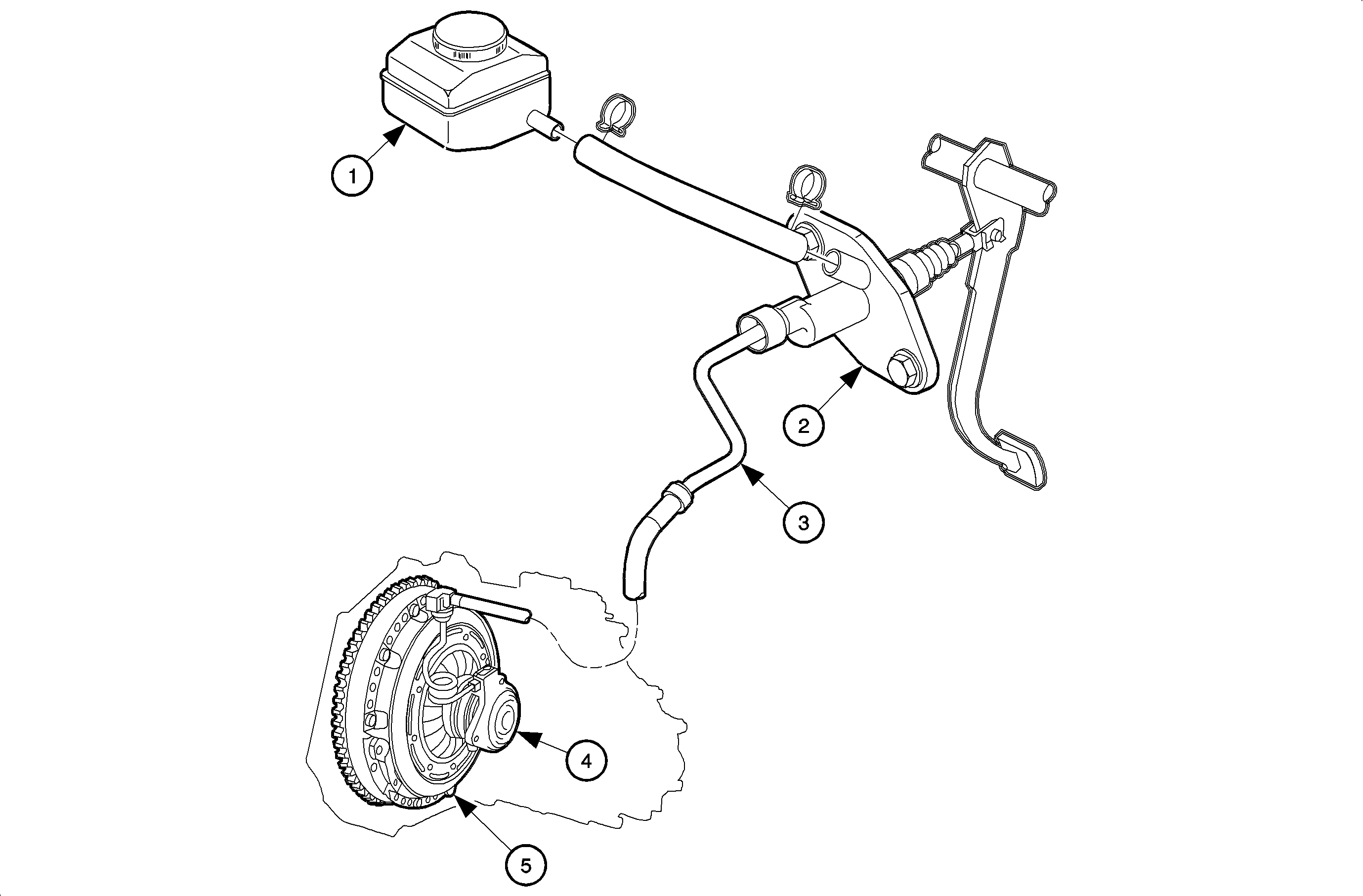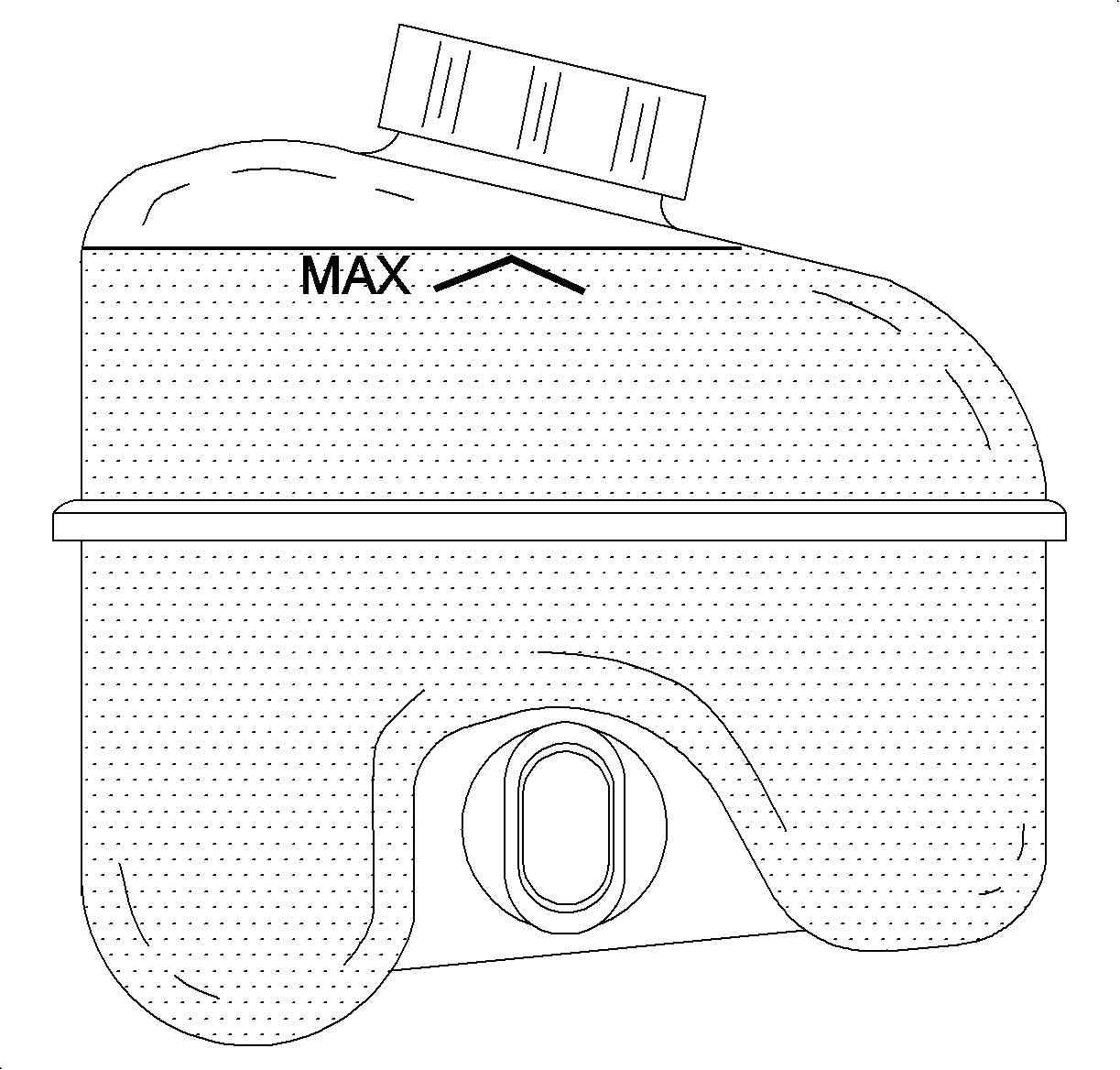
Basic Components
The basic parts of the clutch system are driving members, driven members, and operating members. The clutch housing is part of the transaxle assembly.
Driving Members
The driving members consist of 2 flat surfaces machined to a smooth finish. The rear surface of the flywheel is one and the front surface of the pressure plate assembly (5) is the other. The clutch cover assembly is bolted to the flywheel.
Driven Members
The clutch disc is the driven member which is splined to the input shaft. The clutch disc is free to travel lengthwise along the input shaft splines while driving the input shaft through the splines.
The driving members and the driven members are held in contact by a diaphragm spring. This pressure is generated by a diaphragm spring in the pressure plate assembly (5).
Operating Members
The clutch release system is operated by hydraulic pressure and consists of the clutch pedal, clutch master cylinder (2), and clutch slave cylinder (4) that contains an integral clutch release bearing.
Hydraulic Release System
A hydraulic clutch operating mechanism is used on all manual transaxle models and is completely self-adjusting. The mechanism consists of a master cylinder (2), a hydraulic line assembly (3), and a slave cylinder (4) which contains an integral clutch release bearing. The fluid for the clutch hydraulic system is provided from the brake master cylinder (1). The clutch master cylinder (2) is mounted to the front of the dash, and is operated directly off the clutch pedal by a pushrod. The slave cylinder (4) is mounted inside the clutch housing of the transaxle, and can not be disassembled.
As the clutch pedal is depressed, hydraulic fluid under pressure from the master cylinder flows into the slave cylinder and moves the slave cylinder piston forcing the release bearing against the pressure plate assembly. There is a spring mounted between the slave cylinder housing and release bearing which ensures that the release bearing is always held against the pressure plate, which reduces play in the clutch pedal.
Hydraulic Clutch Fluid Level Check

Notice: Do not use mineral oil or a paraffin base oil in the hydraulic system. These fluids will damage the rubber parts in the cylinders. Only DOT 3 brake fluid should be used.
Notice: Carefully clean the cap and sides of the reservoir before removing the cap to prevent contamination of the system with dirt, water, or other foreign material.
The fluid for the clutch system is provided from the brake master cylinder reservoir. There are only 2 reasons why the brake fluid in the reservoir might go down. First, the brake fluid level will go down due to normal brake lining wear. When new linings are installed, the fluid level will go back up. Second, the brake fluid will drop if the brake system or clutch hydraulic system develops a leak.
If the brake master cylinder requires any fluid, check both the brake and clutch hydraulic systems for leaks. Repair any leaks or replace any faulty components found.
